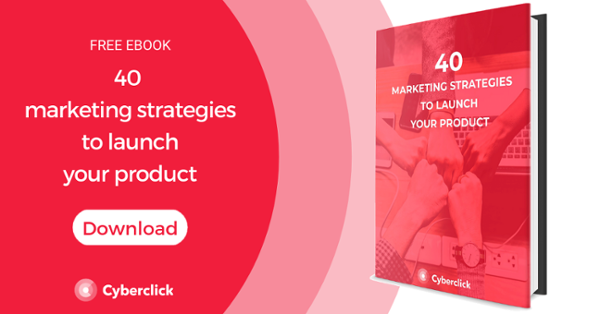It's easy to see that Covid-19 and the ensuing safety lockdowns and confinement periods have disrupted almost every aspect about life that we know. With more people than ever staying home, more users have turned to content to take their time. Because of this, more companies are investing in Inbound Marketing tactics and strategies in order to attract customers to their sites and move them along the funnel.
With this boom in content consumption, it's safe to say that Inbound Marketing will continue to grow in 2021. Let's take a look at the top 4 Inbound Marketing 2021 trends.
2021 Inbound Marketing Trends
1. Video Marketing Applied to Inbound
The 2020 State of Marketing Hubspot Report confirms that video is the content type most used by companies when developing their inbound content strategy. Videos are utilized more frequently than both blogs and infographics.
It is important to take into account user preferences in order to satisfy their needs and generate more engagement. But you should also keep in mind that video is more impactful than other content types because it is easy to share and can more easily go viral. It’s also a format that’s very convenient and users feel very comfortable with.
Types of content that can be useful in an inbound strategy are:
- Courses
- Webinars
- Tutorials
- Q&A
- YouTube stories or TikTok profile
- Events
- Video Ads
- Infographic videos
- Spots
Users prefer video content because they can understand videos and their message more clearly than other formats; retaining the information takes less effort. Although with TikTok it’s been shown that users like to be creative and to be challenged. This new social network is massively trending because it focuses exclusively on videos. YouTube and TikTok are currently dominating the market concerning this type of content.
As if providing great value to the user weren’t enough, Video marketing also builds ranking in search engines, if the right keywords are used in the right ways, of course.
Don’t miss out on the video marketing opportunity in 2021, as it’s been said for years, video is king, and this forecast is already becoming a reality.
2. Semantic SEO and Semantic Buckets (the death of technical SEO)
Google continuously focuses on innovating and improving its searches to get closer and closer to the "humanization" of its search engine. Google can’t continue offering "technical" answers to "linguistic" questions and that’s where we find semantic SEO: understanding the language used and what the user’s search intent is, since more and more queries are written as long questions, or as inquiries to voice assistants. This indicates that we are facing the end of technical SEO and the birth of Google AI, according to this talk given at Inbound 2020.
Google has evolved from keywords alone, to the meaning and relationship that exists between the words that are used in search phrases. For this reason, Google now understands searches based on intention and context:
- Intent: what is being searched for.
- Context: everything that surrounds a search and gives us clues as to where it is going, in other words, what someone might really be looking for in a broader scope, using Google’s algorithm .
With these points established, we must go from thinking about keywords alone to entities: people, places or things about which we know or can know facts and information (dates, locations and other entities) about, and therefore make them unique and distinguishable.
And how can you use this to your advantage in inbound marketing?
- We must understand the entities that are on our pages and those that our competition manages (Kiwosan, Google Cloud).
- Disambiguate them: the clearest way to tell Google what we are talking about is by using what are called “data structures” (Google recommends doing it with the JSON-LD format). This process is called "direct disambiguation" and to use it you must embed the correct codes on websites or on each page so that searches show rich text (rich snippets).
This trend for 2021 comes from the article Puro Marketing written by Carlos Sánchez Corrales, Director of the UNIR Inbound Marketing & Copywriting Program.
3. Content Management System (CMS)
A good CMS or content management system is the dream of any marketer specialized in content management.
The Content Management System empowers websites, thus helping customers achieve more growth .
One example is Hubspot’s launch of its new service in April 2020, CMS Hub Professional. This new tool can help with:
- Recommendations and SEO optimization.
- Flexible themes.
- Creation and testing of content in multiple languages.
- Drag-and-drop editor.
- Adaptive testing.
- Contact attribution reports.
Marketers increase chances of success with a CMS content management system focused on easily creating and managing personalized pages for visitors and optimized for different types of devices. All with a focus on conversion, of course.
Dependency on developers will then be reduced or only needed up to the point where they are absolutely required. This is one of the most important demands of marketers, that they be able to have independence when generating content pages, because it’s not always feasible to have a full-time designer or developer on the team.
4. Changes in Inbound Strategies Due to the Pandemic
Due to the coronavirus pandemic during 2020 and that continues in 2021, we have seen how the behavior and spending patterns of companies and professionals have changed. Also on the end customer’s side, too. So in both the B2B and B2C environments, marketing strategies have had to change.
The customer has adjusted spending (or even cut it) and much more thought has been given towards where and how resources are invested. For this reason, during 2020, and now into 2021, it’s recommended to invest marketing budgets in the MOFU and BOFU phases of the conversion funnel, closer to the final sale.
Source: Cyberclick
Within an inbound marketing strategy this crystallizes into greater content creation. Since March 2020, the content creation boom has been boosted due to global lockdowns and teleworking. This has also created a rise in: webinars, recurring pandemic market studies, free training, courses, articles, interactive content, digital events, videos, etc.
During these first quarters of the pandemic, content has been a way of generating potential customers (leads) at a time when investment has almost stopped. And now going forward into 2021, what we will have to do is guide these leads towards maturity for when investment begins to flow once again. Early in the new year, it’s time to continue with marketing content strategies, but also to make a stronger push in the sales and marketing awareness phases.
Inbound Marketing & Content Strategist en Cyberclick. Experta en marketing online, gestión de contenidos, estrategia en redes sociales, y creación y optimización de campañas en social ads.
Inbound Marketing & Content Strategist at Cyberclick. Expert in online marketing, content management, social media strategy, and creation and optimization of campaigns in social ads.







Leave your comment and join the conversation